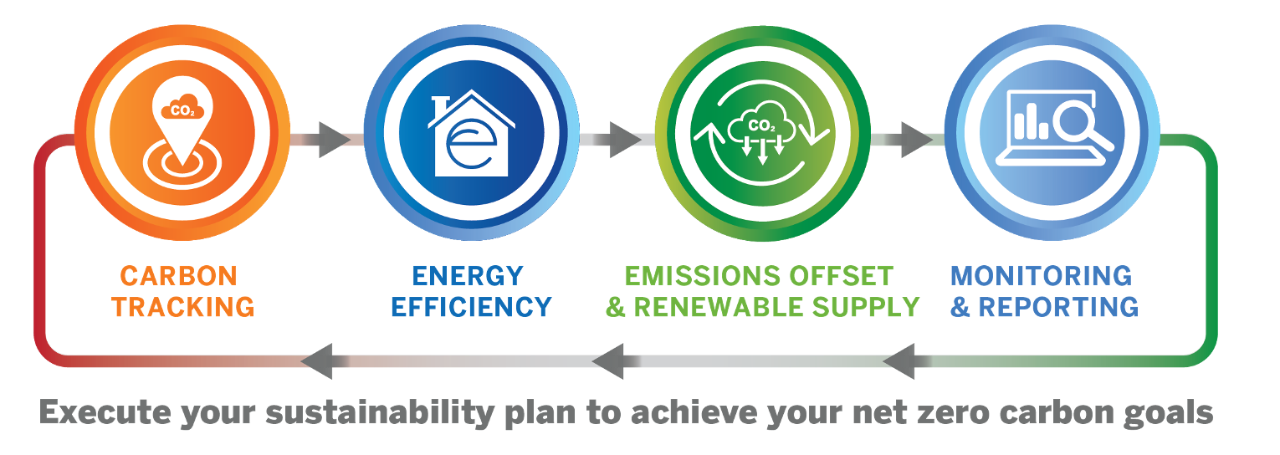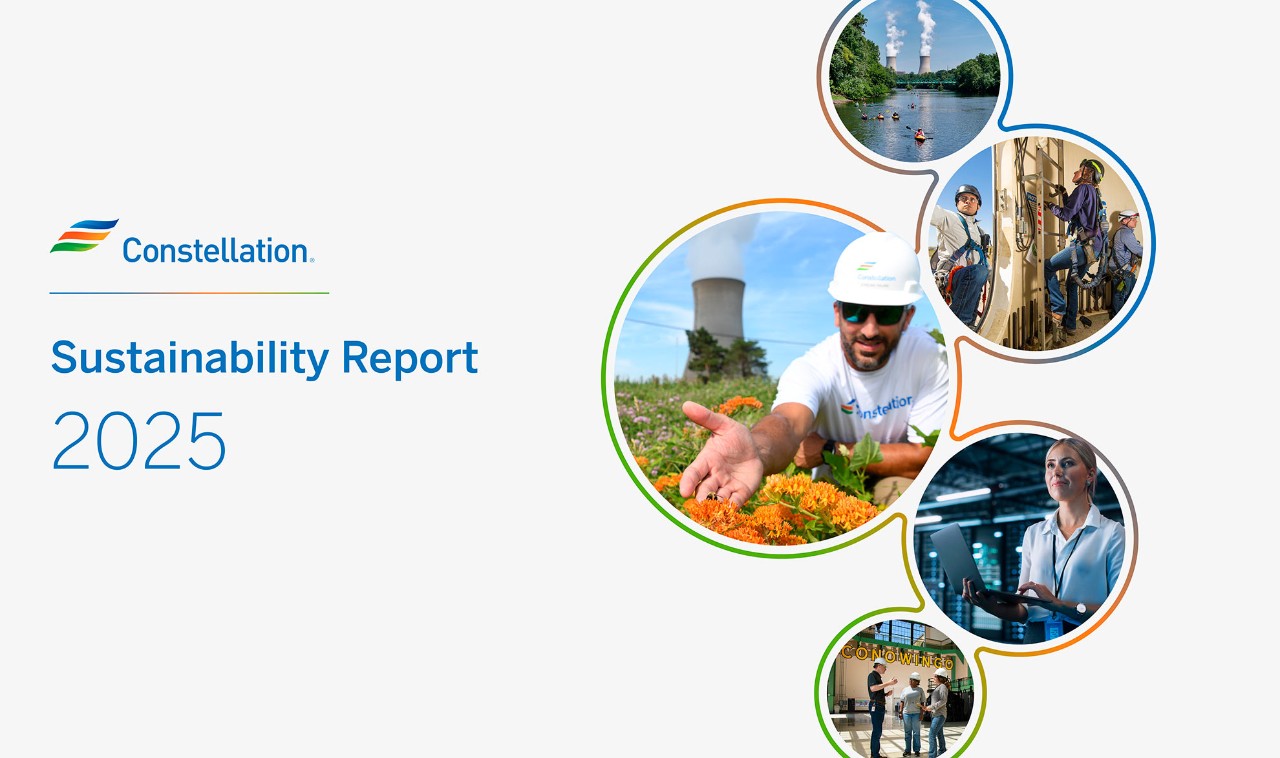Build Your Sustainability Strategy
Constellation can connect you with customized solutions throughout your journey to provide data and reporting to help you reduce emissions and meet sustainability goals.

For some, a journey toward sustainability might begin with gaining a better understanding of energy usage and patterns through analytics. In contrast, others might start by incorporating carbon-free energy sources, market tools to offset their carbon footprint, or by investing locally in renewable energy generation. Regardless of the approach, the goal is the same for many; to learn how to incorporate energy efficiency measures, and carbon offset products, procure renewable energy, and leverage technology to plot a sustainability roadmap that leads to net zero.
